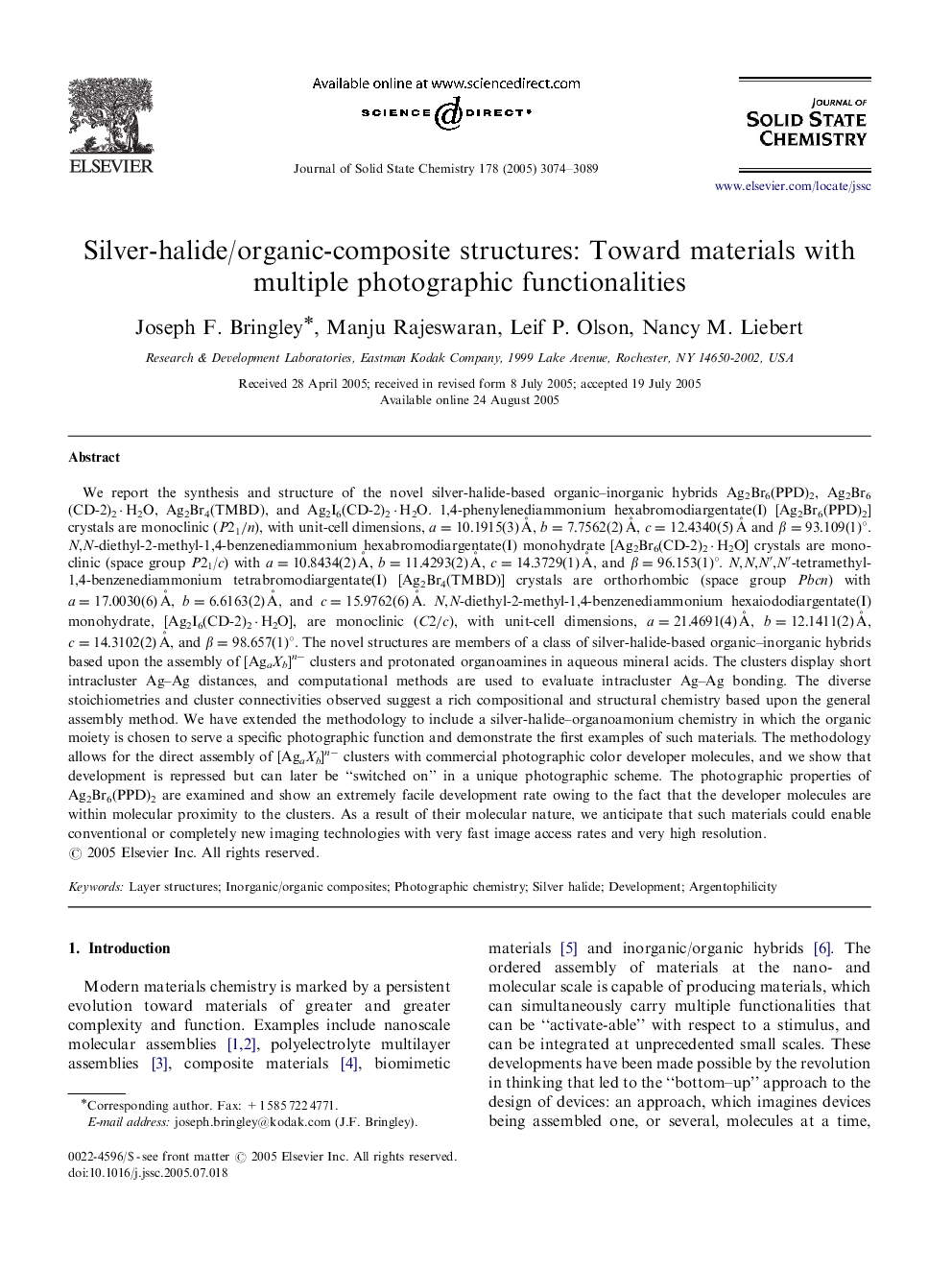| Article ID | Journal | Published Year | Pages | File Type |
|---|---|---|---|---|
| 1334101 | Journal of Solid State Chemistry | 2005 | 16 Pages |
We report the synthesis and structure of the novel silver-halide-based organic–inorganic hybrids Ag2Br6(PPD)2, Ag2Br6(CD-2)2·H2O, Ag2Br4(TMBD), and Ag2I6(CD-2)2·H2O. 1,4-phenylenediammonium hexabromodiargentate(I) [Ag2Br6(PPD)2] crystals are monoclinic (P21/n ), with unit-cell dimensions, a=10.1915(3)Å, b=7.7562(2)Å, c=12.4340(5)Å and β=93.109(1)°β=93.109(1)°. N,N-diethyl-2-methyl-1,4-benzenediammonium hexabromodiargentate(I) monohydrate [Ag2Br6(CD-2)2·H2O] crystals are monoclinic (space group P21/c ) with a=10.8434(2)Å, b=11.4293(2)Å, c=14.3729(1)Å, and β=96.153(1)°β=96.153(1)°. N,N,N′,N′-tetramethyl-1,4-benzenediammonium tetrabromodiargentate(I) [Ag2Br4(TMBD)] crystals are orthorhombic (space group Pbcn ) with a=17.0030(6)Å, b=6.6163(2)Å, and c=15.9762(6)Å. N,N-diethyl-2-methyl-1,4-benzenediammonium hexaiododiargentate(I) monohydrate, [Ag2I6(CD-2)2·H2O], are monoclinic (C2/c ), with unit-cell dimensions, a=21.4691(4)Å, b=12.1411(2)Å, c=14.3102(2)Å, and β=98.657(1)°β=98.657(1)°. The novel structures are members of a class of silver-halide-based organic–inorganic hybrids based upon the assembly of [AgaXb]n− clusters and protonated organoamines in aqueous mineral acids. The clusters display short intracluster Ag–Ag distances, and computational methods are used to evaluate intracluster Ag–Ag bonding. The diverse stoichiometries and cluster connectivities observed suggest a rich compositional and structural chemistry based upon the general assembly method. We have extended the methodology to include a silver-halide–organoamonium chemistry in which the organic moiety is chosen to serve a specific photographic function and demonstrate the first examples of such materials. The methodology allows for the direct assembly of [AgaXb]n− clusters with commercial photographic color developer molecules, and we show that development is repressed but can later be “switched on” in a unique photographic scheme. The photographic properties of Ag2Br6(PPD)2 are examined and show an extremely facile development rate owing to the fact that the developer molecules are within molecular proximity to the clusters. As a result of their molecular nature, we anticipate that such materials could enable conventional or completely new imaging technologies with very fast image access rates and very high resolution.
Graphical abstractSilver-halide-based organic–inorganic hybrids based upon the assembly of [AgaXb]n− clusters and photographically useful molecules; a route to a new class of multifunctional photographic and printing materials.Figure optionsDownload full-size imageDownload as PowerPoint slide
